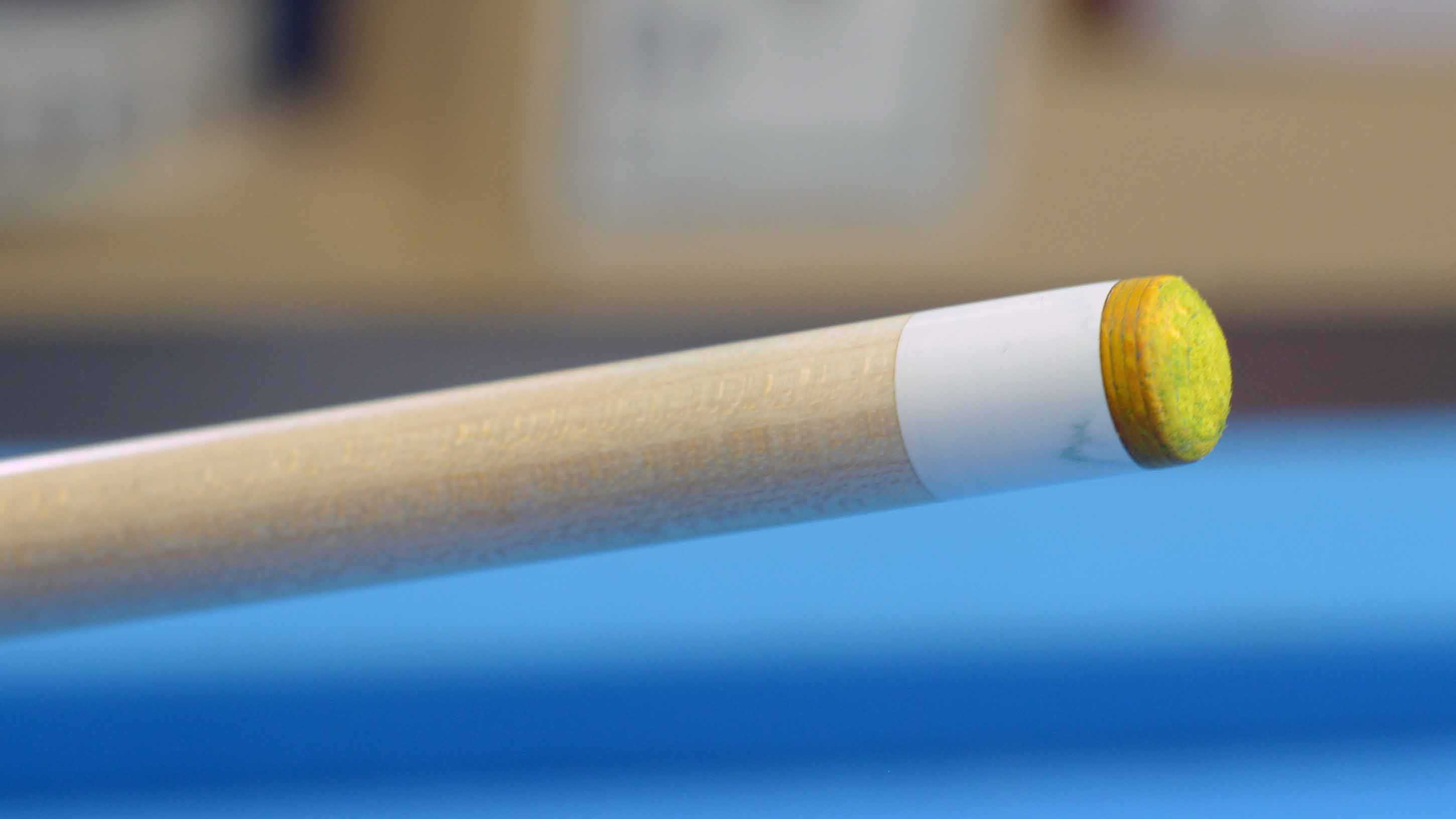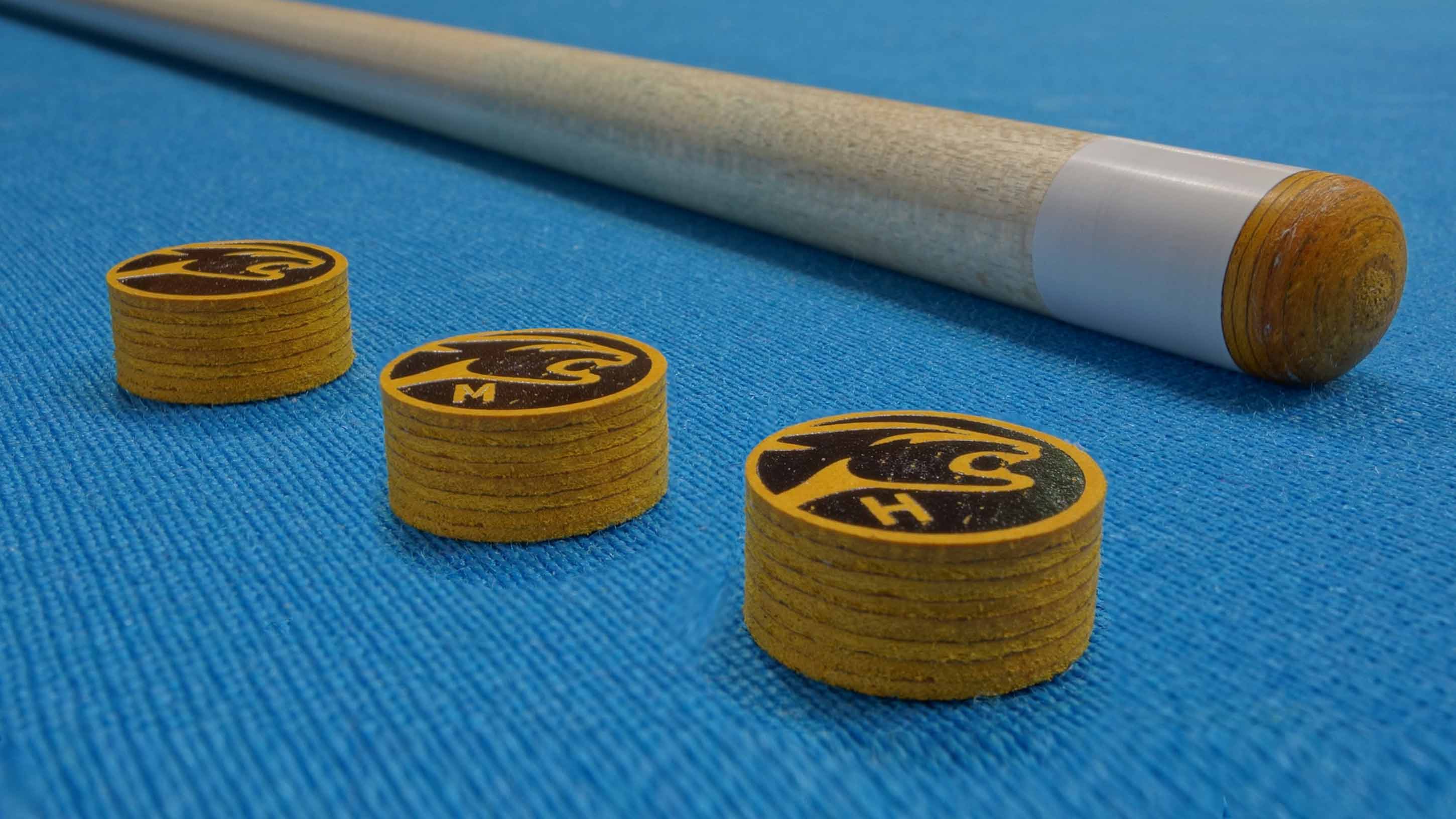Best Pool Cue Tip: Your Ultimate Guide To Perfecting Your Game
Looking for the best pool cue tip to elevate your game? You're not alone! Every serious pool player knows that the right tip can make all the difference in performance, consistency, and control. Whether you're a beginner or a seasoned pro, finding the perfect cue tip is crucial to mastering the game. But with so many options out there, it's easy to get overwhelmed. Let's dive into the world of pool cue tips and help you find the one that suits your style!
Imagine this: you're lining up the perfect shot, but the cue ball spins off in an unexpected direction. Frustrating, right? Often, this issue boils down to the quality of your cue tip. A good tip ensures consistent contact with the ball, giving you better control over your shots. But how do you choose the best pool cue tip for your game?
In this guide, we'll break down everything you need to know about pool cue tips, from materials and sizes to maintenance and recommendations. By the end, you'll have all the tools you need to make an informed decision and take your pool game to the next level. So, grab your cue stick, and let's get started!
- New Ullu Web Series Your Ultimate Guide To The Latest Buzz
- Filmyflynet Hollywood Your Ultimate Guide To Streaming Hollywood Movies
Understanding Pool Cue Tips: What Makes Them Tick?
Before we jump into the best pool cue tips, it's important to understand what makes them tick. A cue tip is the small piece of leather or synthetic material attached to the end of your cue stick. It's the part that makes contact with the cue ball, so its quality directly affects your shots. But here's the thing: not all tips are created equal.
The material, shape, and density of a cue tip can influence factors like spin, accuracy, and durability. For example, a softer tip might give you more control over spin, while a harder tip could provide greater power and speed. The trick is finding the right balance that matches your playing style.
Let’s break it down further. Here are some key factors to consider when choosing a pool cue tip:
- Filmyfly Com 2025 Your Ultimate Guide To South Indian Movies Dubbed In Hindi
- Exploring The World Of Masahub A Comprehensive Guide
- Material: Most tips are made from leather, but synthetic options are also available.
- Hardness: Softer tips offer more spin, while harder tips provide more power.
- Size: The size of the tip affects the contact area with the ball.
- Maintenance: Some tips require more upkeep than others.
Top Materials for the Best Pool Cue Tip
When it comes to pool cue tips, the material matters. The most common materials are leather and synthetic, each with its own set of pros and cons. Let's take a closer look at these options:
Leather Cue Tips: The Classic Choice
Leather has been the go-to material for cue tips for decades, and for good reason. It offers a great balance of control and durability, making it a favorite among players of all skill levels. Leather tips come in different grades, with higher-quality options providing better performance.
One downside of leather tips is that they can wear down over time, especially if you don't maintain them properly. However, with regular care, a leather tip can last for many games and provide consistent results.
Synthetic Cue Tips: The Modern Alternative
Synthetic tips are becoming increasingly popular, thanks to their durability and low-maintenance nature. Made from materials like plastic or resin, these tips are designed to mimic the feel of leather while offering longer-lasting performance.
While synthetic tips might not provide the same level of control as leather, they are a great option for players who want a tip that requires less upkeep. Plus, they often come at a lower price point, making them an attractive choice for budget-conscious players.
Choosing the Right Hardness for Your Game
Another crucial factor to consider when selecting the best pool cue tip is hardness. Hardness affects how the tip interacts with the cue ball, influencing factors like spin, accuracy, and power. Here's a quick breakdown:
Soft Tips: Spin Control Masters
Soft tips are ideal for players who rely heavily on spin to control the cue ball. They allow for greater friction between the tip and the ball, making it easier to apply english and finesse your shots. However, soft tips tend to wear out faster, requiring more frequent replacements.
Medium Tips: The Perfect Balance
Medium tips strike a balance between control and power, making them a versatile choice for most players. They offer enough spin for precise shots while still providing the power needed for more aggressive plays. If you're unsure where to start, a medium tip is a safe bet.
Hard Tips: Power Players Unite
Hard tips are designed for players who prioritize power over spin. They provide a more direct transfer of energy to the cue ball, resulting in faster and more forceful shots. However, they offer less control over spin, so they might not be the best choice for players who rely on finesse.
Size Matters: Finding the Perfect Fit
The size of your cue tip plays a significant role in how it interacts with the cue ball. Larger tips provide a bigger contact area, which can be beneficial for beginners who are still working on their accuracy. On the other hand, smaller tips offer greater precision, making them a favorite among experienced players.
Here's a quick guide to help you choose the right size:
- Small Tips (9mm-11mm): Great for precise shots and experienced players.
- Medium Tips (12mm-13mm): Versatile and suitable for most players.
- Large Tips (14mm+): Ideal for beginners or players who value accuracy over precision.
Maintenance: Keeping Your Tip in Top Shape2>
Even the best pool cue tip won't perform well if it's not properly maintained. Regular upkeep is essential to ensure your tip remains in top condition. Here are some tips (pun intended) for maintaining your cue tip:
Chalking: The Secret Weapon
Chalking your cue tip before each shot is one of the simplest yet most effective ways to improve your game. Chalk helps reduce slippage and ensures better contact between the tip and the cue ball. Be sure to use high-quality chalk and reapply it as needed.
Shaping: Keep It Round
Over time, your cue tip can become misshapen from repeated use. To keep it in optimal condition, use a tip shaper to maintain a round, even surface. This will help ensure consistent contact with the cue ball and improve your overall performance.
Sanding: Restore the Surface
If your tip becomes too flat or worn down, sanding it can help restore its original shape. Use fine-grit sandpaper to gently sand the surface until it regains its desired curvature. Just be careful not to overdo it, as excessive sanding can damage the tip.
Top Picks for the Best Pool Cue Tip
Now that you know what to look for, let's take a look at some of the top-rated pool cue tips on the market:
1. Kamui Soft Tip
The Kamui Soft Tip is a favorite among professional players for its exceptional spin control and consistency. Made from high-quality leather, this tip offers unparalleled performance and durability. While it may come with a higher price tag, the results are well worth the investment.
2. Triangle Medium Tip
For players seeking a versatile option, the Triangle Medium Tip is an excellent choice. It provides a great balance of spin and power, making it suitable for a wide range of shots. Plus, its affordable price point makes it an attractive option for budget-conscious players.
3. LePro Hard Tip
If you're a power player looking for a tip that can deliver fast, forceful shots, the LePro Hard Tip is worth considering. Its durable construction and high-performance design make it a reliable choice for players who prioritize speed and strength.
Expert Recommendations: What the Pros Say
When it comes to choosing the best pool cue tip, it's always a good idea to listen to the experts. Professional players and coaches have spent years honing their craft, and their insights can be invaluable for players of all levels. Here are some expert recommendations to keep in mind:
Tip Selection: Know Your Style
According to renowned pool coach Tom Ross, "The key to choosing the right cue tip is understanding your playing style. If you rely heavily on spin, a softer tip might be the way to go. But if you're more of a power player, a harder tip could be a better fit."
Maintenance: The Key to Success
World champion Efren Reyes emphasizes the importance of maintaining your cue tip. "A well-maintained tip can make all the difference in your game," he says. "Take the time to chalk, shape, and sand your tip regularly, and you'll notice a significant improvement in your performance."
Common Mistakes to Avoid
Even the most experienced players can make mistakes when it comes to selecting and maintaining their cue tips. Here are some common pitfalls to avoid:
- Ignoring Tip Wear: Failing to replace a worn-out tip can negatively impact your game.
- Over-Chalking: Applying too much chalk can lead to buildup and reduce tip performance.
- Improper Storage: Leaving your cue in a damp or humid environment can damage the tip over time.
Final Thoughts: Elevate Your Game
Choosing the best pool cue tip is an essential step in improving your game. By considering factors like material, hardness, size, and maintenance, you can find the perfect tip to match your playing style. Remember, the right tip can enhance your control, accuracy, and overall performance, so don't settle for anything less than the best.
So, what are you waiting for? Grab your cue, select the perfect tip, and take your game to the next level. And don't forget to share your experiences in the comments below. Whether you're a beginner or a pro, we'd love to hear about your favorite tips and tricks for mastering the art of pool!
Table of Contents
- Understanding Pool Cue Tips: What Makes Them Tick?
- Top Materials for the Best Pool Cue Tip
- Choosing the Right Hardness for Your Game
- Size Matters: Finding the Perfect Fit
- Maintenance: Keeping Your Tip in Top Shape
- Top Picks for the Best Pool Cue Tip
- Expert Recommendations: What the Pros Say
- Common Mistakes to Avoid
- Final Thoughts: Elevate Your Game
Article Recommendations
- Filmyfly Bollywood Hindi Dubbed Your Ultimate Guide To Hindi Dubbed Movies
- Filmyfly South And Bollywood Movies Your Ultimate Destination For South Indian And Hindi Cinema



Detail Author:
- Name : Mrs. Dorothea Kreiger
- Username : clyde06
- Email : cohara@herzog.com
- Birthdate : 1982-12-30
- Address : 3383 Bode Port Suite 115 Jillianmouth, KS 69101
- Phone : +1-586-664-9807
- Company : Monahan and Sons
- Job : Postal Clerk
- Bio : Magni vel impedit facere fuga ipsam ad. Alias magnam est sint quia corporis. Cupiditate cumque sed nemo totam. Mollitia blanditiis saepe quia ut id modi.
Socials
tiktok:
- url : https://tiktok.com/@tavares2323
- username : tavares2323
- bio : Provident ullam consequatur autem vitae sapiente ut quod.
- followers : 2667
- following : 2524
twitter:
- url : https://twitter.com/tavareso'conner
- username : tavareso'conner
- bio : Velit occaecati est vitae sed magni sunt accusamus temporibus. Iure quisquam ut autem molestiae nulla. Qui temporibus sunt sint qui iure quam deleniti.
- followers : 6943
- following : 1437
instagram:
- url : https://instagram.com/to'conner
- username : to'conner
- bio : Dolorem aut quia enim quia amet. Est ducimus nam voluptatem assumenda nihil.
- followers : 4632
- following : 206